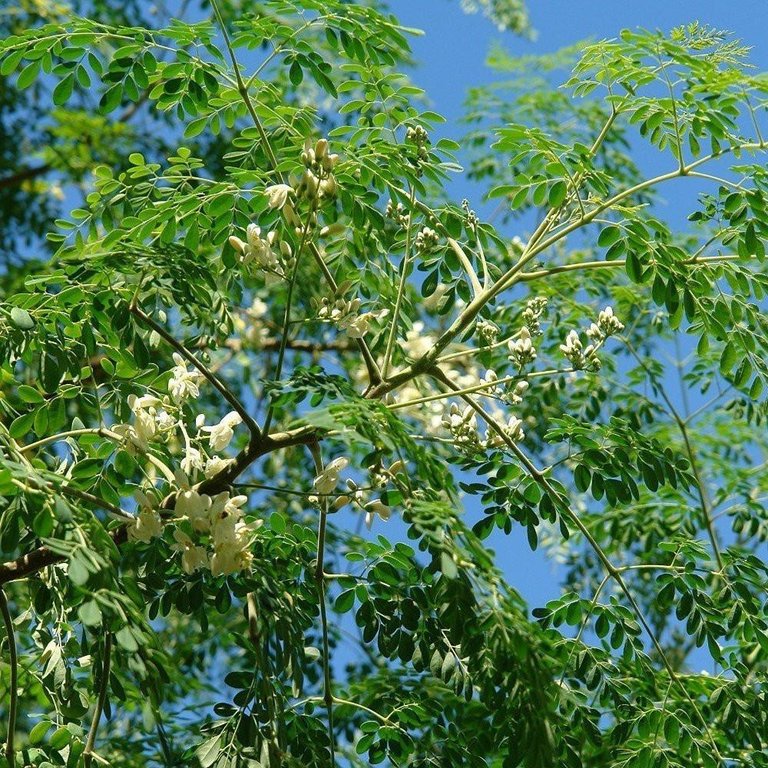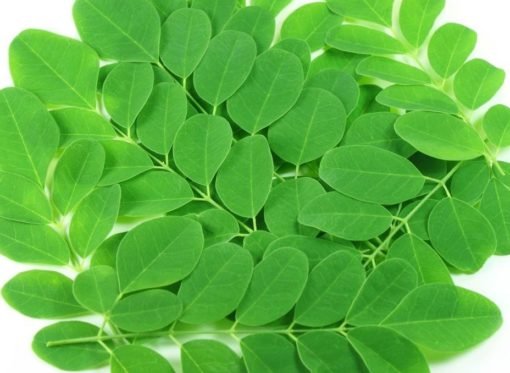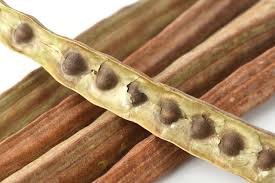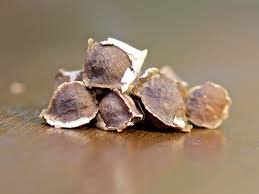
Moringa Oleifera is a tree native to Africa and Asia. It is known in some ancient cultures as the Miracle Tree, Tree of Life, Giving tree, The mothering tree and Drumstick tree. This tree is a gem. It is mostly known for its great medicinal properties and used to treat ailments like cough, tumors, cold, fevers, headaches etc. It’s full of vitamins, minerals, antioxidants which reduce inflammation, lower cholesterol and blood pressure. Leaves are usually put in salads, smoothies and juices.

Leaves can also be used to clean utensils. Moringa is traded commercially in dry leaf or powder form. The powder exists in capsules and loose bags. In total moringa contains about 47 anti oxidants, 36 anti-inflammatories, 25 vitamins, fibre, minerals, amino acids, antibiotics etc.
Mature dried moringa seeds can also be used as coagulant in water treatment.

This means one can afford to treat their own water at home especially in rural areas of Africa where clean water is unavailable and people have to use water from open dams, wells, rivers, streams etc. Mature moringa seeds are usually in pods which crack when dry. Pods are split open to extract the seeds. Shells surrounding the seed kernels are removed using knife.

The kernels are pounded using a mortar and pestle into very fine powder. Sieving can be done to obtain extra fine powder.
Water to be treated can be collected in a built or installed tank. This can be rain water or water from other sources like ponds, wells, rivers or streams. Moringa seed powder can then be dosed directly into the water or via a stock solution. A stock solution is a solution of high concentration in our coagulant (moringa seed powder). The dosing amount depends on the initial properties of the water to be treated e.g pH, turbidity, colour, hardness (due to calcium and magnesium) and conductivity. Turbidity and colour are visible with the naked eye and the more the colour and turbidity the higher the recommended dose. An experimental jar test can be performed to determine the optimum dose but rural people don’t have access to this. According to previous jar test experiments using pond and river water, the optimum dose was found to be between 30 to 45mg/L for direct doses. This is equivalent to a dose of 3ml/L of stock solution with a concentration of 10g/L to 15g/L. Wastewater requires more than 50mg/L direct dose.
How to prepare and use stock solution e.g 10g/L concentration to treat water
- Dissolve 10grams of fine moringa seed powder in 1000ml of distilled water. If distilled water can't be accessed, clean pure water can used.
- 3ml of this stock solution is dosed per litre of the water to be treated i.e if 100litres of water are to be treated then 300ml of prepared stock solution should be dosed.
- For a direct dose of 30mg/L, 100litres of water to be treated will require 3000mg or 3gm of moringa seed powder.
- Stock solution dosage is preferred to direct dosage because it enables the coagulant (moringa seed powder) to dissolve in water faster and act immediately.
- The dosed water is stirred rapidly and immediately for atleast a minute preferably using machinery set in place or by dropping it like a water fall through a 2metre height. This is to enable perfect mixing and get the coagulant working. Coagulation.
- Slow stirring for atleast 10minutes should follow. The longer the better. This is to enable flocculation/floc formation.
- Allow the water to settle for atleast an hour. The formed and settled flocs take with them most of the water’s impurities leaving behind a clear supernatant. The supernatant is clean and better water of low turbidity and colour and can be carried off for use.
Notes;
- Low turbidity is associated with low levels of coliforms like E. coli. Moringa also possesses antimicrobial properties which makes the water more free of pathogens than industrial coagulants like alum.
- Optimum conditions for coagulation and flocculation using moringa include pH 6.0 (slightly acidic), longer stirring (atleast 30minutes), rapid mixing at 260RPM, and 20°C temperature.
- It should be remembered that there is no fixed optimum dose. Doses should be varied depending on the quality of water to be treated. The lower the quality of water the higher the dose required. Dosing too much coagulant will produce too much floc that might be troublesome to separate out especially of you're using filters.
- Filtering water through charcoal (carbon filters) helps to rid it of any foul smell.
- This method of treatment does not remove or kill all pathogens and therefore water must be boiled before drinking it
Credit goes out to these sources where you can also find more on the benefits of Moringa Oleifera 👇
https://therenegadepharmacist.com/moringa-benefits-health-benefits-medicinal-uses-moringa/
https://www.pittaayurveda.com/moringa-oleifera/